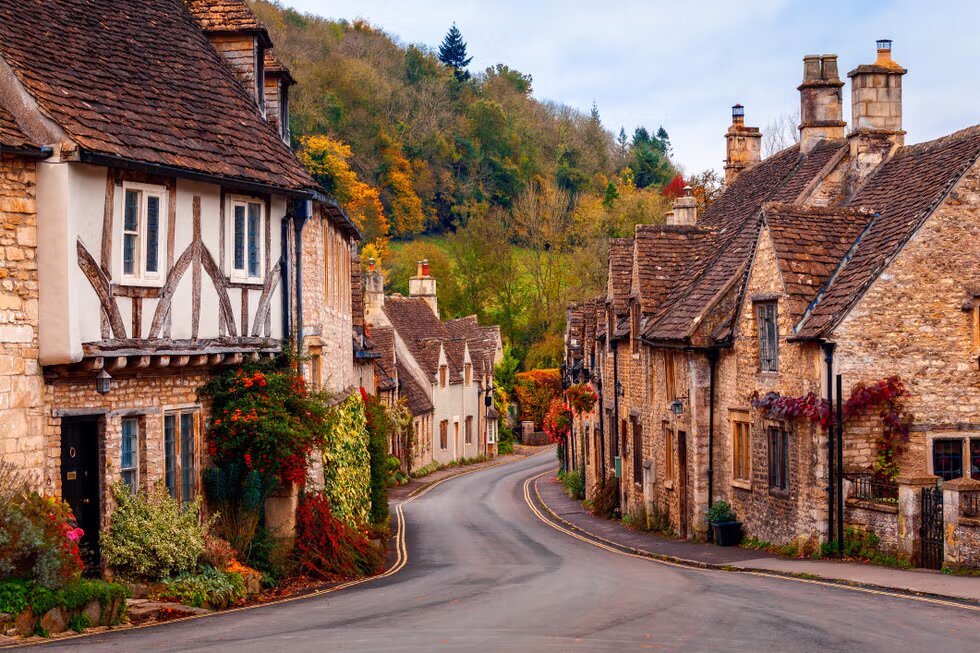
How to Understand the Origins of Cottagecore and How It Became So Popular
You're not alone if you've noticed a constant trickle—or perhaps even a flood—of pictures of sentimental rural landscapes and eyelet-laced peasant costumes appearing in your social media feeds: The cottagecore movement, which harkens back to crafts, rural life, and skills, is becoming more and more popular. "As a concept, it supports a more sustainable, easy life that is in harmony with the natural world. In terms of aesthetics, it's reminiscent of the classic English countryside look, romantic and sentimental, according to Davina Ogilvie, the creator of Woven Home, a start-up that creates handmade window treatments.
It's possible that you have engaged in certain cottage core activities without even recognizing it: keeping up a sourdough starter religiously, deciding all of a sudden that you need a ruffled, flowered outfit à like Laura Ashley, or taking solace in nature and all of its abundant resources.
And just as the aesthetics and activities that cottagecore celebrates are diverse and multifaceted, encompassing everything from cooking to gardening, fashion to frivolity, so are its beginnings. It's partly a response to capitalism and our growing screen time, but it's also influenced by enduring passions for sustainability, wellness, and social consciousness in general.
"After the pandemic struck and quarantines spread around the world, we looked for meaning and fulfillment outside of our financial potential, and cottagecore was the ideal vehicle," says Noemie. All of a sudden, with everyone spending so much time at home, it looked like everyone was planning backyard summer gardens, baking focaccia laced with colorful veggies and herbs, and working on crafts inspired by grandmothers, including knitting and embroidery.
What then is the quintessential cottage core look? The founder of an eponymous tableware and home goods firm, Molly Hatch, has embraced the style and says, "For me, cottage care is about coziness at home." "Bringing in natural elements as decorative pieces—fresh or dried flowers, houseplants—as well as a natural color scheme with neutrals and warm tones are key aesthetic components," she says. You'll be well on your way if you mix in a good helping of historical inspiration from bygone days of farming and some of your grandmother's old-fashioned dishes.
However, cottagecore is more than simply a style for a lot of people. According to Noemie, her account is "a community," which has enabled her to go beyond the conventional notions of cottagecore, which almost solely associated it with a European style from the colonial past that was predominantly white. "I could find nothing when I searched for "cottagecore black females" on any social media platform," she relates.
"I wanted to be as inclusive as possible for my people," she said when she created her own Instagram account, purposefully showcasing a diverse spectrum of Black people who span a range of sizes, genders, skin tones, and religious beliefs. "I didn't want anyone else to feel like that because I knew what it was like to never see people who looked like me living the life I wanted," the woman says.
It's true that for many people, the incessant depictions of slender white women holding wicker baskets full of farm-fresh eggs and linen towels wrapped around freshly baked bread feel problematically nostalgic for eras when, let's face it, life was not as ideal for women and people of color.For Noemie, however, it's crucial to keep in mind that cottagecore is a product of the present and that it has the power to reclaim the past: "A little reimagining of these periods as inclusive rather than exclusive is just as important as preserving the complete history," she says. "It gives us the chance and the imagination to view our ancestors as more than just products of their time."
However, cottagecore is a live, breathing thing that is always growing and evolving, just like any other style or movement. What direction does cottagecore appear to be going? However, one thing is certain: As long as the epidemic keeps a large number of people at home, it won't go away. Since the holidays are approaching and people are inclined to reminisce back on their early years and families, Molly believes that it will maintain its "warm and fuzzy" feel while embracing the historic and romantic. According to Davina, it might blend in with "the clean lines and neutral tones of minimalist decor" and more modern design. And for Noemie, it all comes down to expanding the circle of acceptance and inclusivity—she herself recently changed the name of her account from Cottage Core Black Girls to the more accepting Cottagecore Black Folks in response to a community vote. We will undoubtedly be watching it all, wherever it ends up.

Comments 0